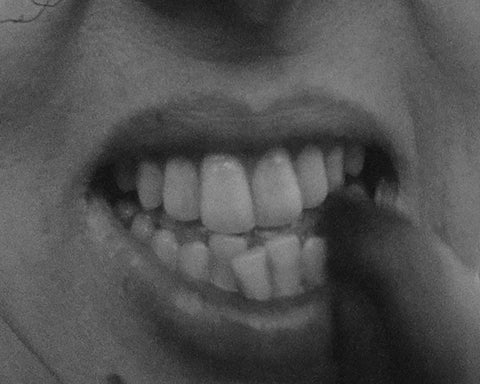
Already by 1940, Dorothea Lange’s Migrant Mother of 1936 generated such demand that a kind of scorecard for its varied appearances was created (fig. 1). The purpose presumably was to hail the photograph’s wide appeal, and by extension the public service of the Farm Security Administration or FSA Historic Section that maintained the New Deal photographic file from whence it came. Eight decades since, reproductions continue proliferating, so much so that nobody keeps complete score. The picture's popularity is unquestionable. But popularity can be blinding. That may be the case with this still-celebrated photograph. Migrant Mother is typically viewed by both champions and critics as resembling the holy family, thus invoking the authority of traditional art as well as belief. As in devotional prayer before icons, putative resemblance to sacred subjects may lead to inattention, or else directs attention to another metaphysical plane. My underlying aim here is to counter that tendency toward inattention, to reexamine the strength of resemblance, and its limits, in the structure of this image. I contend that in close comparison with Marian icons, the reason why this photograph continues to command attention is that it is not so simple or familiar a variant of the holy family imagery as it first appears. There were overtly radical assaults on symbols of piety in the 1930s. Ben Shahn, anti-authoritarian painter turned government photographer during the first years of the New Deal, made modernist mincemeat of Raphael’s Terranuova Madonna in one of his 1935 photographs in Louisiana (figs. 2a-b). To fore-ground the child of tenant farmers and emphasize her vulnerability, Shahn’s in-camera cropping symbolically decapitates the maternal head of the cheap mass reproduction of the 1505 Renaissance masterpiece. But more unobtrusively, Lange’s legendary picture introduces doubts about the intimate, nurturing ideal in the Madonna-and-child scenario elaborated by Raphael and many others.

“It is ironic that Lange, whose relationships with her own children and step children were so difficult and painful, should be known universally for Migrant Mother.” – Milton Meltzer1
Sixteen years ago, a visitor to the Getty Center in Los Angeles arranged for a companion to take his picture in front of the Migrant Mother enlargement advertising the museum’s 2003 Lange exhibition. Intrigued that he had positioned himself as one of the children yet with a gesture to his face mirroring the mother’s, I hastily made my own snapshot (fig. 3). After his portrait session ended, I approached to ask him why he had posed in this way. He replied that he was a photography student who greatly admired this woman he had studied in class. “You studied this woman,” I asked while pointing to the central female figure. “Yes,” he affirmed, “Dorothea Lange,” before he corrected himself and acknowledged that the image he had kneeled before, as if seeking the mother’s blessing, was not an image of the photographer but her most legendary subject.
However naïve, there is something endearing in treating the long-anonymous Florence Owens Thompson as a stand-in for Lange, with the admiring viewer adding himself to the depicted mother’s cluster of progeny. Such a performance fully embodies one recent definition of the mass media icon for the way it “places the viewer in an affective relationship with the people in the picture.” The coauthors of No Caption Needed: Iconic Photographs, Public Culture, and Liberal Democracy make Migrant Mother their opening case study after first contending that easy reproducibility not only does not devalue such enduring public images but rather “enables widespread appropriation of common images ... [as] an important element of democratic culture.” Yet in their first case study, these authors argue less persuasively that Lange’s “photograph interpellates the viewer in the position of the absent father.” That interpretation is hardly supported by the spontaneous portrait session I observed at the Getty Plaza.2
Having witnessed the Getty visitor’s conflating the central female figure with the photographer, I still wonder if this occurs only when considering women photographers, or with male photographers too? Or is it particular to Lange whose role as mother was frequently treated as overarching explanation for her empathic photography? I also have heard an eminent curator marvel about the uncanny resemblance between the same Depression picture and its maker. There is a slight resemblance, but so far from anything “uncanny” that I find myself propelled to emphasize Lange’s distance and difference from the subject and image with which she is most famously identified (figs. 4a-b).

As for Migrant Mother, I would be inclined to resist repeating biographer Meltzer’s use of the encomium “known universally” for Lange’s most famous picture except that the hyperbolic language nearly fits in this case. Quite a few have argued that this 1936 image by Lange has been more widely reproduced than any other in the history of photography. If we already have an “app” that can track and quantify such dissemination, I am not aware of it. But the number of times and diverse cultural contexts that Migrant Mother has been reproduced or served as clear source for new emblematic images of mothers holding strong or beset by new challenges (including the challenge of parody) is phenomenal. No wonder then that Migrant Mother works so effectively as banner and cover image for diverse exhibitions and publications and thus so readily seems to encapsulate the artist’s life and concerns.3
Notes
1 Milton Meltzer, Dorothea Lange: A Photographer’s Life (New York: Farrar Straus Giroux, 1978), 136.
2 Robert Hariman and John Louis Lucaites, No Caption Needed: Iconic Photographs, Public Culture, and Liberal Democracy (Chicago: University of Chicago Press, 2007), 37-38, 58.
3 See section VIII of Therese Thau Heyman, Celebrating a Collection: The Work of Dorothea Lange (Oakland, CA: Oakland Museum, 1978), 60-61; and Sarah Hermanson Meister, Dorothea Lange: Migrant Mother (New York: Museum of Modern Art, 2018), 31-39.

Excerpt from the introduction to Migrant Mother, Migrant Gender by Sally Stein, published March 2020.





